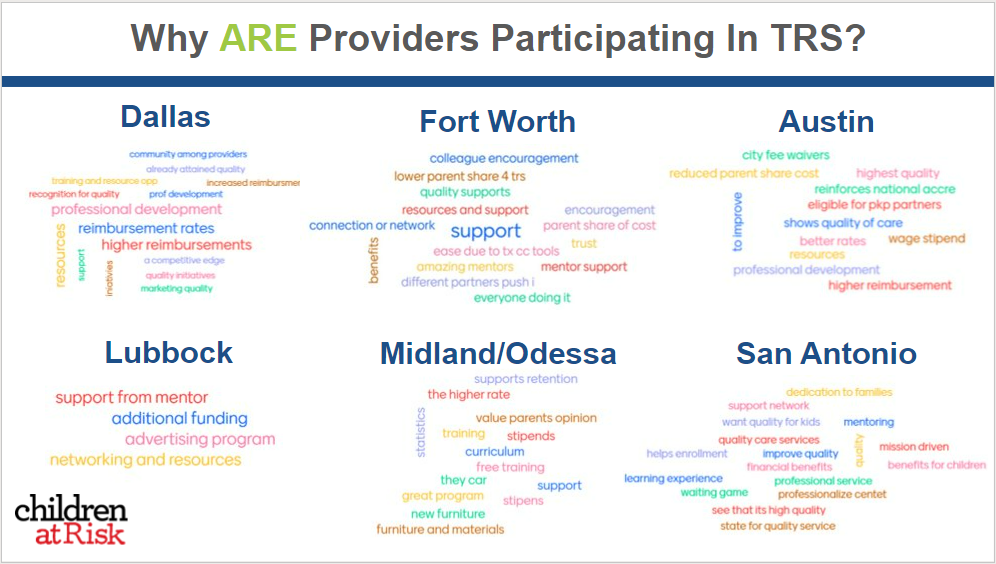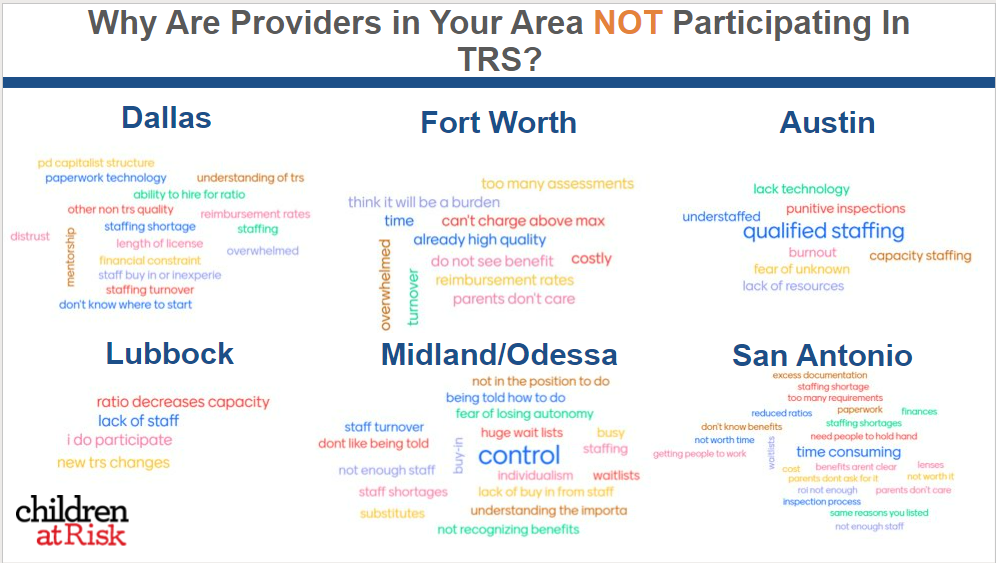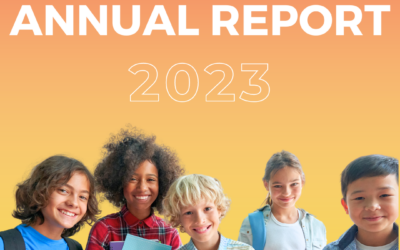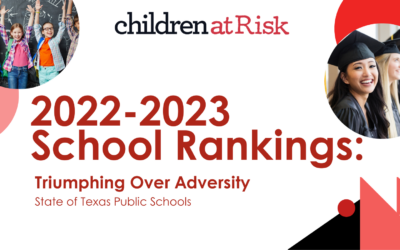
CHILDREN AT RISK ECE Team presented new data & gathered stakeholder feedback in 10 texas cities
During the weeks of April 11 and April 25, the Children At Risk Early Childhood Education Team hosted roundtable discussions with ECE providers, advocates, and stakeholders in 10 Texas cities to discuss their new report, the Quest for Equity & Quality, present new data on childcare closures through the pandemic, and invite participation and advocacy ahead of the 88th legislative session. The team met (virtually) in Dallas, Fort Worth, Lubbock, Midland, Dallas, San Antonio, Houston, Amarillo, El Paso, and Rio Grande Valley.
Throughout the discussions, participants were asked to provide local perspectives on Texas Rising Star participation. As they were in the Quest for Equity & Quality report, recurring themes for providers not participating in the Texas QRIS system included administrative concerns, lack of knowledge about the program, and extreme difficulties with staffing needs. Participants reported that in their areas providers appreciate the mentoring, resources, and increased reimbursement rates that come with Texas Rising Star participation.
Texas Tour Participants shared reasons child care providers in their area do and do not participate in Texas Rising Star. Above are examples from 6 cities.
After discussing the Quest for Equity & Quality report and collecting local experiencies and feedback, the ECE team presented closure data from Child Care Regulations that was analyzed in partnership with Child Care Aware of America. Statewide, 21.2% of child care programs were closed in September 2021 (compared to early March 2020). 79.1% of programs that closed were family child care centers. Only 2.9% of programs that closed were in Texas Rising Star, suggesting the program offered much needed support through COVID. The data also suggests that stabilization grants from the Texas Workforce Commission helped child care centers stay open with only 1.6% of programs that received a stabilization grant had closed in Sept. 2021.
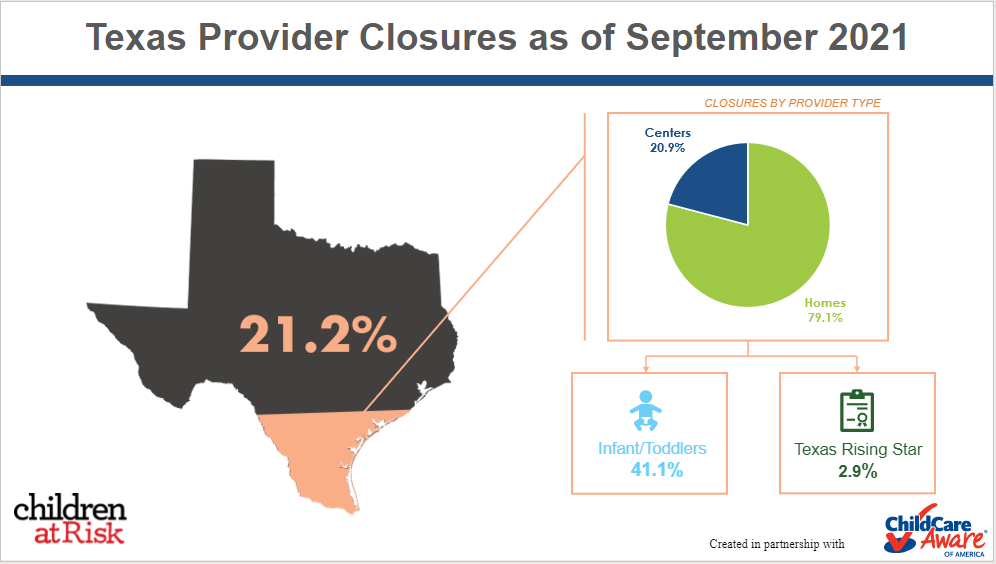
Finally, the presentation ended with a call to action to contact Texas legislators during the interim to ensure they are prioritizing child care going into the 88th Legislative Session. Specifically, the International Relations and Economic Development Committee has been given an interim charge relating to child care.
MORE LIKE THIS
Recap | National Immigration Summit: Leading with a Child-Centered Focus
This post was written by Sebastiao Goncalves, Communications Intern & Podcast Producer, and Becky Quintanilla, Project Coordinator with CHILDREN AT RISK. On Thursday, June 20th, CHILDREN AT RISK (C@R), the Texas Family Leadership Council...
2024 C@R Special Events
Special Eventsconvening for change Every dollar donated helps us improve the lives of Texas children. CHILDREN AT RISK is a 501(c)(3) non-profit organization (EIN: 76-0360533). Contributions are tax-deductible to the fullest extent allowed by law. ...
2023 Annual Report
It is with immense pride and joy that we announce the start of a significant milestone: the 35th Anniversary of CHILDREN AT RISK. For over three decades, our organization has been at the forefront of advocating for the well-being and rights of...
2024 Equity Tour
The Texas Equity Tour, slated for March and April 2024, is a pivotal event organized by CHILDREN AT RISK (C@R) to address systemic racism and its impact on Texas children and families. Rooted in the principles of racial equity, the tour serves as a...
2022-2023 CHILDREN AT RISK’s Annual School Rankings
For the past nineteen years, CHILDREN AT RISK (C@R) has ranked and graded Texas public schools to help parents, educators, and community members better understand how their local schools are performing. By providing this information to parents and...
2024 C@R Learning Events
Learning Eventsconvening for change CHILDREN AT RISK is committed to hosting free events that engage the public and help them drive change for children. We aim to share research, unpack pressing policy issues, and highlight diverse community...
Ensuring the Mental Well-Being of Latino Children: The Importance of School-Based Mental Health Services and Parent Intervention
The Latino population represents the largest and fastest growing minority group in the United States. Data suggests that schools in the United States now enroll more than twice as many Latino students as they did in 1995, and it that by the end of...
